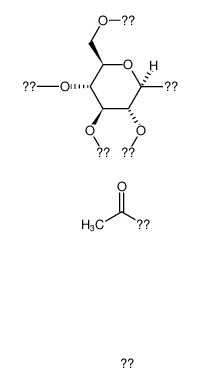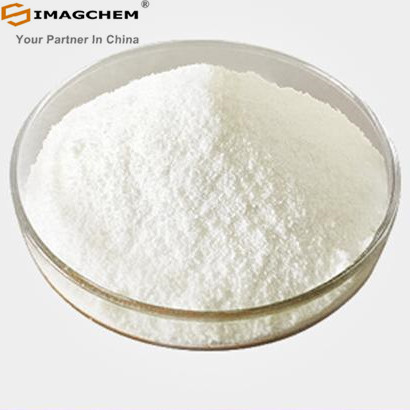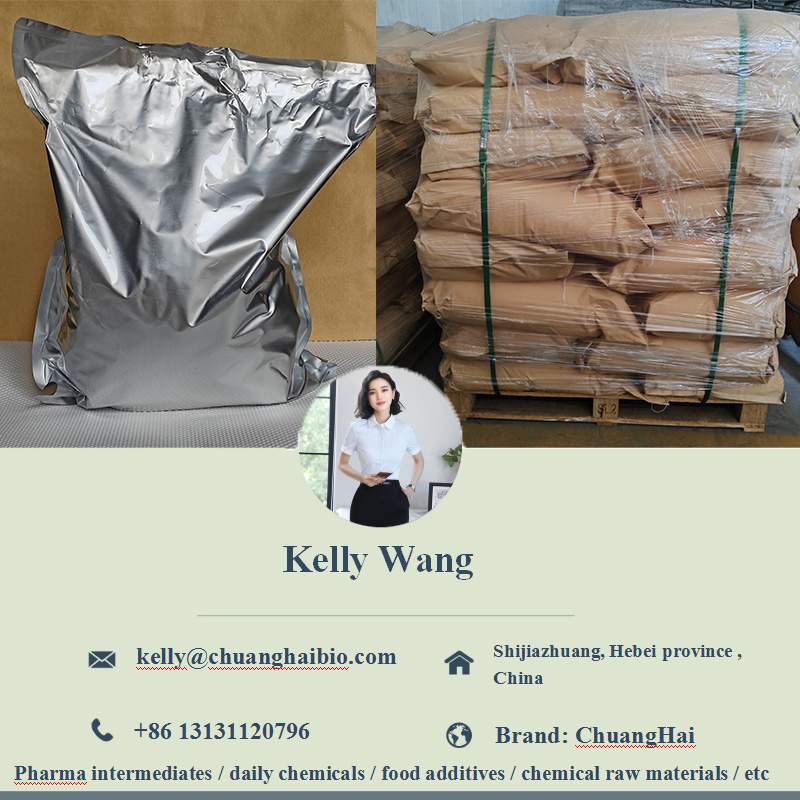
-
Cellulose acetate
CAS No.: 9004-35-7 Formula: C8H10O6 Molecular Weight: 203.16900Search Suppliers
-
Cellulose acetate
CAS No.:9004-35-7
Formula:C8H10O6
Molecular Weight: 203.16900
Basic Info
Chemical Name |
Cellulose acetate |
|---|---|
Synonyms |
|
CAS No. |
9004-35-7 |
Molecular Formula |
C8H10O6 |
Molecular Weight |
203.16900 |
PSA |
63.22000 |
LogP |
-0.09540 |
Numbering system
| UNII | 3J2P07GVB6 |
|---|
MSDS
Total 1 Documents >>-
MSDS
Expand -
MSDS
Collapse
Section 1 - Chemical Product MSDS Name:Cellulose Acetate Material Safety Data SheetName: Cellulose Acetate Material Safety Data Sheet Synonym: Acetic Acid, Cellulose Ester CAS: 9004-35-7
Synonym:Acetic Acid, Cellulose Ester
Section 2 - COMPOSITION, INFORMATION ON INGREDIENTS
Hazard Symbols: None Listed.CAS# Chemical Name content EINECS# 9004-35-7 Cellulose Acetate 100 unlisted
Risk Phrases: None Listed.
Section 3 - HAZARDS IDENTIFICATION
EMERGENCY OVERVIEW
Not available.
Potential Health Effects
Eye:
Dust may cause mechanical irritation.
Skin:
May cause skin irritation. Low hazard for usual industrial handling.
Ingestion:
Ingestion of large amounts may cause gastrointestinal irritation.
Inhalation:
May cause respiratory tract irritation. Low hazard for usual industrial handling.
Chronic:
No information found.
Section 4 - FIRST AID MEASURES
Eyes: Flush eyes with plenty of water for at least 15 minutes, occasionally lifting the upper and lower eyelids. If irritation develops, get medical aid.
Skin:
Flush skin with plenty of water for at least 15 minutes while removing contaminated clothing and shoes. Get medical aid if irritation develops or persists. Wash clothing before reuse.
Ingestion:
Never give anything by mouth to an unconscious person. Get medical aid. Do NOT induce vomiting. If conscious and alert, rinse mouth and drink 2-4 cupfuls of milk or water.
Inhalation:
Remove from exposure and move to fresh air immediately. If not breathing, give artificial respiration. If breathing is difficult, give oxygen. Get medical aid if cough or other symptoms appear.
Notes to Physician:
Section 5 - FIRE FIGHTING MEASURES
General Information:
As in any fire, wear a self-contained breathing apparatus in pressure-demand, MSHA/NIOSH (approved or equivalent), and full protective gear. During a fire, irritating and highly toxic gases may be generated by thermal decomposition or combustion. This material in sufficient quantity and reduced particle size is capable of creating a dust explosion.
Extinguishing Media:
In case of fire, use water, dry chemical, chemical foam, or alcohol-resistant foam. Use agent most appropriate to extinguish fire.
Section 6 - ACCIDENTAL RELEASE MEASURES
General Information: Use proper personal protective equipment as indicated in Section 8.
Spills/Leaks:
Vacuum or sweep up material and place into a suitable disposal container. Clean up spills immediately, observing precautions in the Protective Equipment section. Avoid generating dusty conditions.
Provide ventilation.
Section 7 - HANDLING and STORAGE
Handling:
Wash thoroughly after handling. Use with adequate ventilation. Avoid contact with eyes, skin, and clothing. Keep container tightly closed.
Avoid ingestion and inhalation. Wash clothing before reuse.
Storage:
Store in a cool, dry place. Store in a tightly closed container.
Keep from contact with oxidizing materials.
Section 8 - EXPOSURE CONTROLS, PERSONAL PROTECTION
Engineering Controls:
Use adequate ventilation to keep airborne concentrations low.
Exposure Limits CAS# 9004-35-7: Personal Protective Equipment Eyes: Wear appropriate protective eyeglasses or chemical safety goggles as described by OSHA's eye and face protection regulations in 29 CFR 1910.133 or European Standard EN166.
Skin:
Wear appropriate gloves to prevent skin exposure.
Clothing:
Wear appropriate protective clothing to minimize contact with skin.
Respirators:
Follow the OSHA respirator regulations found in 29 CFR 1910.134 or European Standard EN 149. Use a NIOSH/MSHA or European Standard EN 149 approved respirator if exposure limits are exceeded or if irritation or other symptoms are experienced.
Section 9 - PHYSICAL AND CHEMICAL PROPERTIES
Physical State: Solid
Color: white
Odor: none reported
pH: Not available.
Vapor Pressure: Negligible.
Viscosity: Not available.
Boiling Point: Not applicable.
Freezing/Melting Point: 260 deg C
Autoignition Temperature: Not applicable.
Flash Point: Not applicable.
Explosion Limits, lower: Not available.
Explosion Limits, upper: Not available.
Decomposition Temperature: Not available.
Solubility in water: Negligible in water.
Specific Gravity/Density: 1.27
Molecular Formula: Polymer
Molecular Weight: 0
Section 10 - STABILITY AND REACTIVITY
Chemical Stability:
Stable at room temperature in closed containers under normal storage and handling conditions.
Conditions to Avoid:
Incompatible materials, dust generation, excess heat, strong oxidants.
Incompatibilities with Other Materials:
Strong oxidizers.
Hazardous Decomposition Products:
Carbon monoxide, irritating and toxic fumes and gases, carbon dioxide.
Hazardous Polymerization: Has not been reported.
Section 11 - TOXICOLOGICAL INFORMATION
RTECS#:
CAS# 9004-35-7 unlisted.
LD50/LC50:
Not available.
Carcinogenicity:
Cellulose Acetate - Not listed by ACGIH, IARC, or NTP.
Section 12 - ECOLOGICAL INFORMATION
Section 13 - DISPOSAL CONSIDERATIONS
Products which are considered hazardous for supply are classified as Special Waste and the disposal of such chemicals is covered by regulations which may vary according to location. Contact a specialist disposal company or the local waste regulator for advice. Empty containers must be decontaminated before returning for recycling.
Section 14 - TRANSPORT INFORMATION
IATA
Not regulated as a hazardous material.
IMO
Not regulated as a hazardous material.
RID/ADR
Not regulated as a hazardous material.
Section 15 - REGULATORY INFORMATION
European/International Regulations
European Labeling in Accordance with EC Directives
Hazard Symbols: Not available.
Risk Phrases:
Safety Phrases:
WGK (Water Danger/Protection)
CAS# 9004-35-7: 0
Canada
CAS# 9004-35-7 is listed on Canada's DSL List.
CAS# 9004-35-7 is not listed on Canada's Ingredient Disclosure List.
US FEDERAL
TSCA
CAS# 9004-35-7 is listed on the TSCA inventory.
SECTION 16 - ADDITIONAL INFORMATION
N/A

Other items you might be interested in

-
CAS No.: 112945-52-5
Silica, fumed

-
CAS No.: 33069-62-4
Paclitaxel

-
CAS No.: 11021-13-9
Ginsenoside Rb2

-
CAS No.: 26328-04-1
Cinepazide maleate

-
CAS No.: 501-36-0
Resveratrol

-
CAS No.: 21645-51-2
Aluminium hydroxide










-
-

-
-
-

-
-
-

-
-
-

-
-
-

-
-
-

-
-
-

-
-
-

-
-
-

-
-
-

-
More Suppliers>>Hangzhou J&H Chemical Co., Ltd.
CHINA
Purity: 98%
Lead Time: 7 Day(s)
Price: -
Xiamen Zhixin Chemical Co., Ltd.
CHINA
Purity: 99%
Lead Time: 3 Day(s)
Price: -
Shanghai Jizhi Biochemical Technology Co., Ltd.
CHINA
Purity: 乙酰基39.8 wt% ,羟基3.5 wt%
Lead Time: 1 Week(s)
Price: -
Hangzhou DayangChem Co., Ltd
CHINA
Purity: 99%
Lead Time: 7 Day(s)
Price: -
Skyrun Industrial Co., Limited
CHINA
Purity: 99%
Lead Time: 7 Day(s)
Price: -
Hangzhou Bingochem Co., Ltd.
CHINA
Purity: 98%
Lead Time: 7 Day(s)
Price: -
CHINA
Purity: 99%
Lead Time: 1 Day(s)
Price: Min $1 /kg
Shanghai Xinyu Biological Technology Co., Ltd.
CHINA
Purity: 99%
Lead Time: 2 Day(s)
Price: Min $90 /g
Shanghai Macklin Co.,ltd
CHINA
Purity: -%
Lead Time: 0 Day(s)
Price: Min $12 /g
Shanghai Miner Chemical Technology Co., Ltd.
CHINA
Purity: 96%
Lead Time: 21 Day(s)
Price: Min $17.33 /g